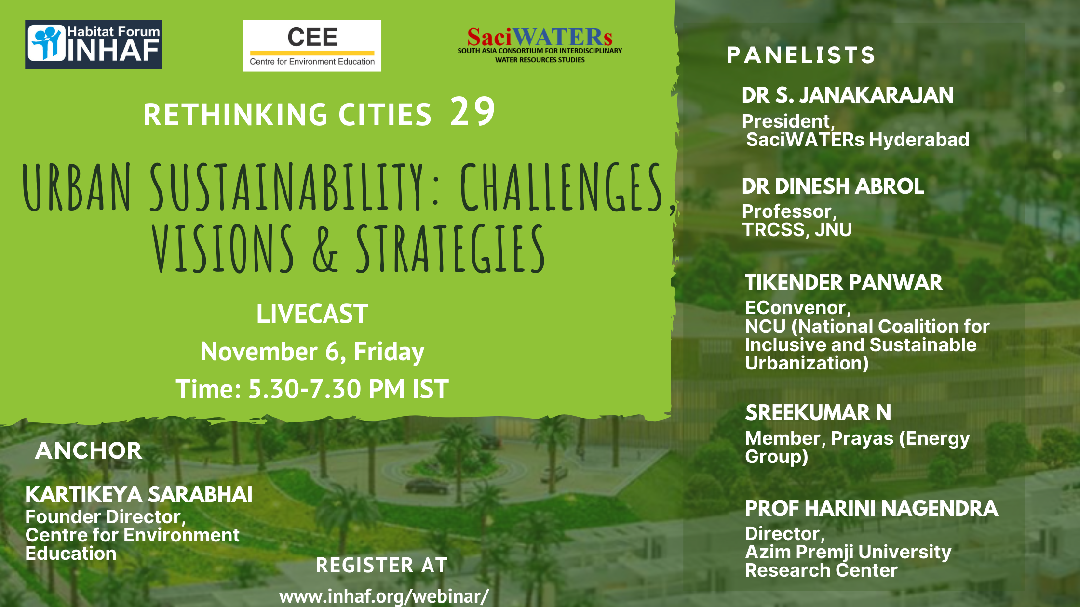
Local Time
- Timezone: America/New_York
- Date: Nov 06 2020
Urban Sustainability: Challenges, Visions & Strategies
Cities account for 60-80 per cent of energy consumption and 75 per cent of carbon emissions. They are also home to extreme poverty, unemployment and socio-economic disparities, non-optimal waste management, unsustainable patterns of consumption and production, major contributors to air and water pollution and are key contributors to climate change, environmental degradation and low safety. And yet, cities also accommodate most of the world’s businesses, provide markets for industry and employment, foster technological innovations, and support high-density habitation and efficient land use. It is evident that Sustainable development cannot be achieved without significantly transforming the way we build and manage our cities.
Cities are of course not isolated entities but draw upon resources from a large catchment area. In turn they also impact a much larger area than the city boundaries would indicate. Whether it is water that they use or the pollution that they cause, the city impacts the entire region in which they are located. Cities draw their workforce from a much wider area and as the recent pandemic showed, the impact of a failed city level response was most felt by the migrants who the city hardly took responsibility for. So one obvious question is, can one think of sustainability of a city in isolation to the larger region that the city impacts.
However having said that one can still look at a city as a sub-system and ensure that its footprint is minimized and how it can positively impact not only the itself but the surrounding area and the people who work and live in it. With over 40% of the cities’ inhabitants living in slums, with rampant pollution and very poor air quality, with our rivers becoming drains and urban commons disappearing we are far from what we can call sustainable.
The Sustainable Development Goals recognize the central role of urbanization in sustainable development, and call for ‘making cities and human settlements inclusive, safe, resilient and sustainable.’ Considering the anticipated scale of urbanisation over the next 15 years, as well as the fact 60 percent of the area that will be occupied by cities in 2030 is yet to be built, cities can prove to be the places where the 2030 Agenda’s goals for sustainable development are linked and achieved.
This INHAF webinar will look at different perspectives on what a sustainable city would look like and what are the strategies to achieve more sustainable urbanization in India.
